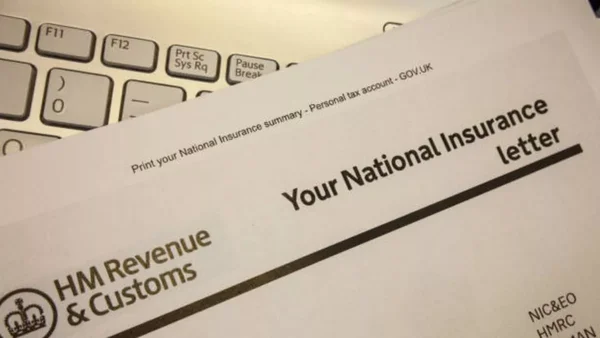Check Your Tax Code: The Simple Guide to Getting It Right
Your tax code determines how much tax you pay specifically, your income tax and getting it wrong could cost you hundreds or even thousands of pounds each year. HMRC issues millions of incorrect tax codes annually, affecting countless taxpayers who never notice the mistake.
Understanding your tax code is your responsibility, not your employer’s or HMRC’s. Checking your tax code takes just minutes but could save you significant money.
At Pie tax, the UK’s first personal tax app, we help thousands decode their tax codes and reclaim overpaid tax every month. Or if you’re just here to get to grips with it all, let’s break it down!
What Is a Tax Code and Why Does It Matter?
Your tax code is a combination of numbers and letters that tells your employer or pension provider how much tax to deduct from your pay (salary or wages). Most tax codes consist of numbers followed by a letter (like 1257L). You can check what your tax code means using the GOV.UK tax code checker.
This might look like a random code, but it actually contains important information about your tax situation. A tax code includes details such as your tax-free allowance, any deductions, and special circumstances like emergency or Scottish/Welsh tax rates. The numbers show how much tax-free income you get each year, while the letters provide additional information about your circumstances.
If your tax code is wrong, you could end up paying too much or too little tax, which affects how much income tax is paid from your salary or wages. Neither is ideal, as underpayments will eventually catch up with you.

Where to Find Your Tax Code
The easiest place to check your tax code is on your payslip if you are employed. Look for it near your National Insurance number or in the deductions section. Your payslip will also show how much Income Tax you have paid.
Your P60 (the tax summary you get after the end of each tax year) also shows your tax code and the total tax paid in the current tax year. If you’re retired, your tax code appears on your pension statement.
You can also check your tax code online by signing in to your Personal Tax Account on the HMRC website. Signing in is required to access your account online. If you can’t find your tax code anywhere, call HMRC directly on 0300 200 3300.
I once spent 45 minutes on hold with HMRC only to discover my tax code was incorrect because they thought I still had a company car from three years ago. A quick check could have saved me both time and money.
Understanding the Numbers in Your Tax Code
The numbers in your tax code represent your tax-free Personal Allowance divided by 10. For example, the standard Personal Allowance for 2023/24 is £12,570, which gives the common tax code 1257L. These calculations are used to determine your tax-free allowance.
If your tax code has lower numbers, it means you can earn less before paying tax. This often happens because you have other income or taxable benefits, and other calculations may be applied to adjust your tax code accordingly.
Higher numbers mean you get more tax-free income, perhaps because you’ve claimed tax relief on work expenses or pension contributions.

Decoding the Letters in Your Tax Code
The letter ‘L’ means you’re entitled to the standard Personal Allowance this is the most common letter you’ll see.
There are different tax codes for different circumstances. For example, codes like ‘D0’ and ‘D1’ indicate that all your income is taxed at the higher rate or additional rate, respectively. There are also codes for Scottish rates, which apply different tax bands for people living in Scotland.
A ‘K’ code means you have income that isn’t being taxed another way, or you’re getting taxable state benefits. It can also be due to company benefits or unpaid tax.
‘BR’ means all your income from this job or pension is taxed at the basic rate (20%) with no tax-free amount. This code often applies if you have more than one job. If you have one job, you may have the standard code, but if you have more than one job, you may have different codes for each income source.
‘NT’ means no tax is taken from your income at all rare but nice if you’re eligible!
Emergency tax codes like ‘W1’, ‘M1’, or ‘X’ mean your tax is calculated on a ‘week 1’ or ‘month 1’ basis, not cumulatively over the year.
Codes for pensions can also apply to state pension income. Codes like ‘M’ and ‘N’ relate to the marriage allowance, which allows you to transfer 10% of your partner's personal allowance between spouses or civil partners for tax benefits. These codes indicate entitlement to or transfer of the partner’s personal allowance.
If you are self employed and then move to employment, you may have special codes while HMRC updates your records.
Common Reasons Why Your Tax Code Might Change
Starting a new job often triggers a temporary emergency tax code until HMRC has full details of your situation. Your new employer will use the tax code provided by HMRC to ensure accurate tax deductions. Receiving taxable benefits from your employer, like a company car or private health insurance, will reduce your tax-free allowance.
Changes to the standard Personal Allowance (though this has been frozen until 2028) will affect most tax codes. If you owe tax from previous years, HMRC might adjust your code to collect the tax paid gradually.
Having multiple jobs or pensions can complicate your tax code. Your Personal Allowance is usually only applied to one source of income.
If you are unsure about changes to your tax code, you can seek support for guidance and assistance.

How to Check If Your Tax Code Is Correct
Compare your actual circumstances with what your tax code suggests, and make an assessment of your tax situation. Do you have benefits or other income that might explain a reduced allowance?
Calculate your expected tax-free amount by multiplying the numbers in your tax code by 10. This helps you estimate how much income tax you should pay. Does this match what you think you’re entitled to?
Check if HMRC has made any adjustments by looking at your PAYE Coding Notice or logging into your Personal Tax Account online, where you can also check your tax code. If something doesn’t look right, contact HMRC straight away mistakes are common but fixable.
Keep records of all communications with HMRC, including when you called, who you spoke to, and what was agreed. These records help you track how much income tax you have paid.
Final Thoughts
Regularly checking your tax code is a simple but crucial habit that can save you money and prevent unwelcome tax bills. Don't assume HMRC always gets it right taking ownership of your tax code puts you in control of your finances.
If you discover you've been on the wrong tax code, you can claim back overpaid tax for up to four years. This could potentially be a significant sum.
Remember that your tax code should reflect your current situation. Notify HMRC of any major life changes that might affect it.

Pie.tax: Simplifying Tax Code Checks
Getting your tax code right shouldn’t feel like solving a puzzle with missing pieces. The UK’s first personal tax app, Pie tax, verifies your tax code accuracy automatically and provides support to help you understand and resolve any issues, alerting you to potential errors before they become expensive problems.
With our real-time monitoring, you’ll know immediately when your tax code changes. We’ll flag when something doesn’t match your income profile.
We can help you communicate with HMRC directly through the app if corrections are needed. This saves you hours on hold and the frustration of explaining your situation multiple times.
Our users save an average of £220 annually just by having their tax codes correctly monitored and adjusted. Take a look at the Pie tax app if you’d like to see how we’re making tax simpler for everyone in the UK with online tools for checking your tax code.











